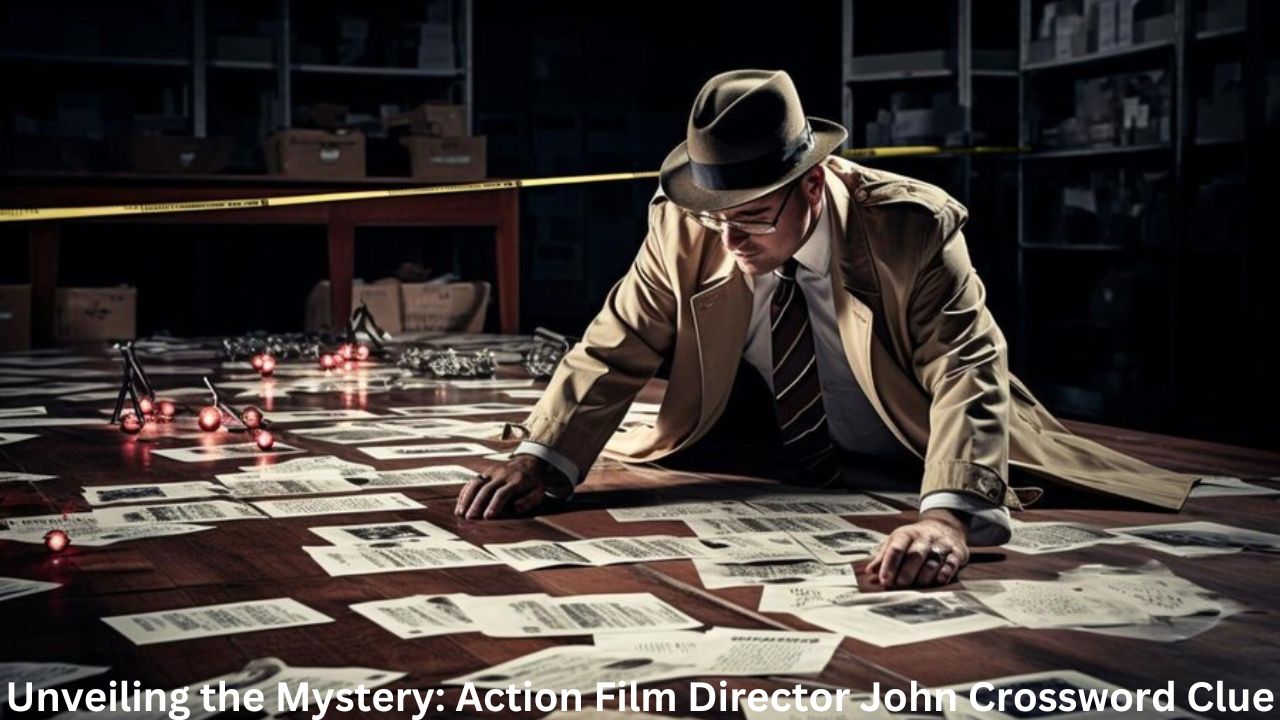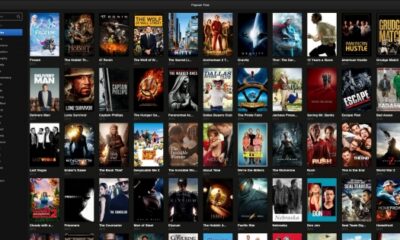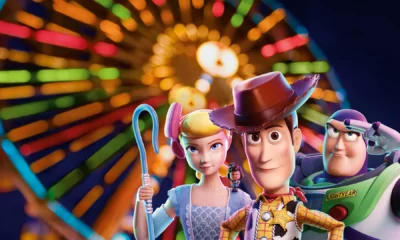Film
dG9ERgG-deadpool-2

Deadpool 2, the sequel to the wildly popular Deadpool, continues the adventures of the irreverent anti-hero, Deadpool, played by Ryan Reynolds. Released in 2018, the film was directed by David Leitch and received praise for its humor, action sequences, and performances.
Plot Overview
The story follows Deadpool as he forms a team of mutants, known as X-Force, to protect a young mutant from the time-traveling soldier Cable. Along the way, Deadpool confronts his own struggles and seeks redemption for past actions.
Characters in Deadpool 2
- Deadpool/Wade Wilson: The titular character, known for his sarcastic humor and self-awareness.
- Cable: A time-traveling soldier with a tragic past, played by Josh Brolin.
- Domino: A mutant with the power of luck, portrayed by Zazie Beetz.
- Russell Collins/Firefist: A young mutant with fiery powers, played by Julian Dennison.
Themes in Deadpool 2
The film explores themes of family, redemption, and acceptance. Deadpool forms a bond with the young mutant Russell, seeing in him a chance for redemption and a chance to be part of a family.
Action and Humor in Deadpool 2
Known for its over-the-top action sequences and meta-humor, Deadpool 2 delivers plenty of laughs and thrills. The film doesn’t shy away from poking fun at itself and the superhero genre as a whole.
Visual Effects and Cinematography
Deadpool 2 features impressive visual effects, especially in its action sequences. The film’s cinematography adds to its gritty and humorous tone, creating a unique visual style.
Soundtrack and Music
The film’s soundtrack features a mix of classic hits and original music, adding to its energetic and irreverent vibe. The music enhances the film’s action sequences and emotional moments.
Reception and Box Office Performance
Deadpool 2 was well-received by critics and audiences alike, praising its humor, action, and performances. The film was a box office success, grossing over $785 million worldwide.
Impact and Legacy of Deadpool 2
The success of Deadpool 2 further solidified the character’s popularity and paved the way for more R-rated superhero films. The film’s blend of humor and action influenced future superhero films and the portrayal of anti-heroes.
Conclusion
Deadpool 2 is a hilarious and action-packed sequel that delivers on the promise of the original film. With its memorable characters, witty dialogue, and impressive visuals, Deadpool 2 continues to be a fan favorite in the superhero genre.
Film
America’s Biggest Independent Film Festival Crossword: Unraveling the Clue to Sundance Film Festival

Crossword puzzles have long been a fun and challenging way for people to test their knowledge. When you come across a clue like “America’s Biggest Independent Film Festival Crossword,” the answer becomes clear: Sundance Film Festival. As the largest and most prestigious platform for indie films, Sundance holds a special place in American cinema. This festival not only showcases creative, low-budget films but also launches the careers of emerging filmmakers. It’s a cultural phenomenon that deserves attention, and its influence continues to shape the film industry today.
In this article, we’ll dive into the history and significance of the Sundance Film Festival, explore its role in the independent film scene, and uncover how it became synonymous with the clue “America’s biggest independent film festival.”
The Origins of Sundance Film Festival
Sundance began in 1978 as the Utah/US Film Festival in Salt Lake City. The festival was initially aimed at showcasing American-made films, particularly those produced outside of Hollywood. Robert Redford, the festival’s founder and an acclaimed actor, had a vision to promote independent films. He wanted to give filmmakers who lacked big studio backing a platform to share their work with a wider audience.
Redford’s dedication to nurturing new voices led to the growth of the festival. In 1985, the event was renamed the Sundance Film Festival, after his famous character, the Sundance Kid. The festival soon became a place where filmmakers, actors, and film enthusiasts could converge, bringing together creativity and independent spirit. Sundance continues to be a leader in showcasing groundbreaking films from across the globe.
Sundance’s Role in Independent Cinema
Independent films often push boundaries and challenge conventional storytelling. Sundance plays a crucial role in promoting these films, providing a platform where new ideas can thrive. Unlike Hollywood blockbusters, indie films often have smaller budgets and fewer resources. Despite this, they frequently tackle more complex and daring topics, offering fresh perspectives.
Through Sundance, indie filmmakers have the chance to gain recognition. The festival offers exposure to not only a larger audience but also film distributors, critics, and producers. Many indie films showcased at Sundance go on to become mainstream hits, proving that creativity and innovation can rival big-budget productions.
How Sundance Became America’s Biggest Independent Film Festival
Sundance Film Festival has grown from a regional event into a global celebration of film. The festival’s success stems from its commitment to authenticity. It remains focused on films that challenge norms and offer new perspectives. Unlike many festivals that have succumbed to commercialization, Sundance continues to champion the independent spirit.
Each year, filmmakers from around the world submit their work, hoping to be selected for a coveted spot. The competition is fierce, with thousands of entries vying for attention. However, only the best make it to the final lineup, ensuring that every film shown at Sundance holds significance.
As America’s biggest independent film festival, Sundance sets the standard for showcasing innovative filmmaking. Filmmakers know that a debut at Sundance can open doors to future projects and career advancement.
The Sundance Selection Process
The selection process for Sundance is rigorous, but it’s part of what makes the festival stand out. Films are chosen based on creativity, storytelling, and their ability to resonate with audiences. Unlike mainstream festivals, which often prioritize star power or financial backing, Sundance values artistic merit.
Filmmakers submit their works months in advance, with the final selections revealed shortly before the festival begins. Once a film is selected, the director and cast can expect significant attention from both the media and film industry insiders. A Sundance screening often serves as a launching pad for further success in the entertainment world.
Famous Films That Emerged from Sundance
Over the years, many critically acclaimed films have had their start at Sundance. These films prove that independent cinema can create lasting cultural impact. Some of the most notable include:
- “Reservoir Dogs” by Quentin Tarantino: This 1992 film, known for its sharp dialogue and non-linear narrative, was a breakout hit at Sundance. Tarantino, a relatively unknown filmmaker at the time, used the festival to showcase his talent, launching his now legendary career.
- “Little Miss Sunshine”: A quirky family road trip comedy, “Little Miss Sunshine” was a Sundance favorite in 2006. The film’s heartwarming story and unique characters resonated with audiences, leading to its success at the Academy Awards.
- “Whiplash”: The intense drama about a young drummer’s obsession with greatness made waves at the 2014 Sundance Film Festival. The film’s electrifying performances and tight narrative structure earned it multiple awards, including three Oscars.
These films, and many others like them, prove that Sundance is a vital stepping stone for filmmakers aiming to make a lasting mark on the industry.
Sundance and the Rise of Streaming Platforms
The digital age has significantly influenced the film industry, and Sundance is no exception. Streaming platforms like Netflix, Hulu, and Amazon Prime have altered the distribution landscape for independent films. These platforms have become major buyers of indie films, many of which first gained attention at Sundance.
The festival has embraced this change, with several Sundance premieres being picked up by streaming services for wide release. For filmmakers, this presents a unique opportunity. Not only do they get the exposure of a Sundance premiere, but they also benefit from the global reach of streaming platforms.
In recent years, films such as “Manchester by the Sea” and “The Big Sick” have been bought by streaming platforms after debuting at Sundance. This shift has broadened the audience for indie films, allowing more people to appreciate stories that may not have made it to traditional theaters.
Sundance’s Impact on Diversity in Filmmaking
Sundance has long been a champion of diverse voices in film. The festival consistently showcases stories from underrepresented groups, giving a platform to filmmakers who might otherwise struggle to gain recognition. Gender, race, and sexuality are common themes in the films selected for Sundance, making it a powerful advocate for inclusivity in the film industry.
For example, “Moonlight”, the 2017 Oscar-winning film, began its journey at Sundance. The movie’s exploration of black identity and sexuality was groundbreaking, and Sundance gave it the exposure it needed to reach a wider audience.
By prioritizing diverse voices, Sundance has changed the narrative around who can tell stories and whose stories deserve to be told. The festival has encouraged filmmakers to explore different perspectives, challenging the homogeneity often seen in mainstream cinema.
The Role of the Sundance Institute
Behind the festival’s success is the Sundance Institute, a non-profit organization founded by Robert Redford. The Institute provides year-round support to filmmakers, offering mentorship, funding, and resources to help independent artists succeed.
Through the Institute, Sundance has expanded its reach beyond just the festival. Programs like the Sundance Labs offer filmmakers the opportunity to develop their skills in an environment that fosters creativity and collaboration. The Institute also focuses on giving marginalized voices a chance to tell their stories, aligning with the festival’s commitment to diversity and inclusion.
The Future of Sundance Film Festival
As Sundance continues to evolve, it remains a vital force in the world of independent cinema. The festival’s commitment to discovering new talent and pushing the boundaries of storytelling ensures that it will remain a key player in the film industry.
With the rise of streaming services, Sundance will likely continue to influence how indie films are distributed and consumed. The festival’s ability to adapt to the changing landscape of film distribution is one of its strengths. As more filmmakers turn to digital platforms, Sundance will play an important role in shaping the future of how we experience independent films.
Conclusion
When you see “America’s Biggest Independent Film Festival Crossword,” the answer is clear: Sundance Film Festival. The festival’s commitment to independent voices, its championing of diversity, and its ability to adapt to modern trends have made it a global phenomenon. Sundance not only showcases indie films but also shapes the future of cinema, one groundbreaking story at a time.
FAQs
What is America’s biggest independent film festival?
Sundance Film Festival is America’s largest and most famous independent film festival.
Who founded the Sundance Film Festival?
The festival was founded by actor Robert Redford in 1978, originally called the Utah/US Film Festival.
How do filmmakers get selected for Sundance?
Filmmakers submit their films months in advance, and selections are based on creativity, storytelling, and resonance with audiences.
What films got their start at Sundance?
Notable films include “Reservoir Dogs,” “Little Miss Sunshine,” “Whiplash,” and many more.
How has Sundance influenced streaming platforms?
Sundance films are often bought by streaming services like Netflix and Amazon Prime, giving indie films global reach.
What is the Sundance Institute?
The Sundance Institute is a non-profit organization that supports independent filmmakers through mentorship, funding, and resources.
Film
Unveiling the Mystery: Action Film Director John Crossword Clue

Unveiling the Mystery, Action Film Director John Crossword Clue. Action films offer excitement with thrilling scenes and bold characters, but crosswords can bring a twist to this genre. One specific clue, action film director John, has challenged crossword solvers and film buffs alike. It asks for a famous director named John who fits both the clue and the grid. While the clue seems simple, it refers to a few well-known directors. In this article, we’ll examine which action film director fits the clue, and how these directors have shaped action films.
Many crossword solvers love this clue because it intertwines general knowledge with film trivia. The clue taps into the rich world of action films and its key figures, leaving solvers guessing which “John” to choose. The action genre has several notable directors named John. Let’s dive into the possible answers.
John Woo: Master of Action
John Woo often comes to mind first when people think of action film directors named John. Woo, a legendary Hong Kong filmmaker, has a major influence on both Eastern and Western action cinema. His style includes slow-motion gunfights, choreographed stunts, and dramatic sequences.
Woo’s work in Hollywood has earned him international acclaim. Films like Face/Off and Mission: Impossible II showcase his unique touch in creating intense action scenes. His use of “gun-fu” (a mix of guns and martial arts) became his signature style. As a result, Woo’s name fits well with the crossword clue. His films reflect not just action, but also emotional depth.
John McTiernan: A Hollywood Legend
Another strong possibility for the crossword clue is John McTiernan. His name is synonymous with some of Hollywood’s most famous action films. McTiernan directed Die Hard, which redefined the action genre and set a new standard. With Predator, he combined sci-fi and action to create a thrilling, suspenseful film.
McTiernan’s skill lies in balancing character development with explosive action scenes. He made sure that his films were not only exciting but also engaging on a deeper level. In Die Hard, McTiernan turned a hostage situation into a timeless action classic, influencing countless movies that followed. His work makes him an ideal fit for the crossword clue.
John Sturges: A Classic Influence
Although less modern, John Sturges stands out as a pioneer of action films. He directed classics like The Magnificent Seven and The Great Escape. These films, though older, continue to inspire new generations of action filmmakers. Sturges’ focus on ensemble casts, gripping plots, and large-scale action scenes cemented his place in action cinema history.
Many people may not think of Sturges immediately when solving the action film director John clue, but his contributions are undeniable. Sturges helped lay the groundwork for the action films that would follow in later decades.
Film Directors in Crossword Puzzles
Film directors often make appearances in crosswords because they represent a perfect blend of pop culture and specific knowledge. The clue action film director John fits well within this concept. It appeals to both casual crossword solvers and film enthusiasts.
Directors like John Woo and John McTiernan are household names, making them likely answers for such clues. Many crossword fans recognize their films and associate them with the action genre. Using well-known directors as clues makes puzzles more engaging while testing solvers’ memory of film history.
The Impact of John Woo’s Directing Style
John Woo’s career spans multiple decades, influencing countless filmmakers. His unique style includes slow-motion shots, complex fight choreography, and emotional storytelling. Woo gained fame through Hong Kong cinema before making his mark in Hollywood. A Better Tomorrow launched his career and solidified his place in film history.
Woo’s success comes from blending intense action with deep emotional conflict. His films, such as Hard Boiled, highlight complex characters alongside stunning visuals. For crossword solvers, Woo’s name is often the first that comes to mind when facing the clue action film director John. His international fame and iconic films make him a solid guess.
John McTiernan’s Contributions to Action Cinema
If Woo is the international master of action, McTiernan is the Hollywood counterpart. McTiernan changed the landscape of action movies with his innovative ideas. His films, like Die Hard and The Hunt for Red October, introduced new ways to build tension and excitement.
McTiernan made action movies more intelligent, combining thrilling scenes with intricate plots. Die Hard became an instant classic, influencing the genre for years to come. The film’s unique setting and its unforgettable villain (Alan Rickman’s Hans Gruber) set it apart. These elements cement McTiernan’s legacy as one of the greatest action film directors.
Other Directors Named John
Though Woo and McTiernan are the most recognized, other directors named John also contribute to the action genre. John Carpenter, known mainly for horror, also directed notable action films like Escape from New York. His films balance action with suspense, making him a noteworthy addition to this list.
Another possibility for the crossword clue is John Frankenheimer, who directed Ronin. This film, known for its intense car chases, showcases Frankenheimer’s attention to detail and mastery of action scenes. While not as famous as Woo or McTiernan, Frankenheimer’s work has its place in the action film hall of fame.
Lastly, John Milius deserves mention. Though Milius is better known for his screenwriting, he directed action films like Conan the Barbarian. His rugged style and focus on epic themes make him a key figure in the genre.
Why Film Directors Fit Crossword Puzzles
Crossword puzzles often draw from pop culture because it keeps solvers engaged. A clue like action film director John taps into two things: general knowledge and film trivia. Using directors in crosswords challenges solvers’ recall ability while connecting them to popular entertainment.
Directors are also a perfect fit because their work is widely recognized. For example, films by Woo and McTiernan have become cultural touchstones. These movies remain in the public consciousness, making their directors likely candidates for crossword clues.
Conclusion: Solving the Puzzle
The crossword clue action film director John offers multiple answers, depending on how you view the action genre. John Woo and John McTiernan remain the top contenders due to their influential work. However, John Sturges, John Carpenter, and John Frankenheimer also fit the bill in their unique ways.
Crossword solvers who are also film buffs will find this clue especially satisfying. It forces them to dig into their knowledge of action films and match the clue with the right director. Whether it’s Woo’s slow-motion gunfights or McTiernan’s explosive set pieces, each director has contributed something unforgettable to the genre.
FAQs
Who is John Woo?
John Woo is a famous director known for action films like Face/Off and Hard Boiled.
What is John McTiernan known for?
John McTiernan is known for directing Die Hard and Predator, which redefined the action genre.
Why do crosswords use film directors?
Crosswords use film directors because they blend general knowledge with specific trivia, making puzzles more engaging.
What is John Woo’s directing style?
John Woo is known for his slow-motion action scenes and emotionally charged storytelling.
Who is another action film director named John?
John Carpenter, though mainly known for horror, also directed action films like Escape from New York.
What makes John McTiernan’s films iconic?
McTiernan’s films blend intense action with strong character development, making them timeless classics in the genre.
Film
2020 Sci-Fi Film with a Palindromic Title: A Deep Dive into “Tenet”

In 2020, one sci-fi film with a palindromic title made waves across the world: Tenet. Directed by Christopher Nolan, Tenet was not just another blockbuster. It pushed the boundaries of time manipulation, merging mind-bending concepts with intense action sequences. With its ambitious storytelling and innovative visual effects, the film stands as one of the most complex and discussed movies of the year.
Christopher Nolan is known for his complex narratives, and Tenet was no exception. The film captivated audiences and left many grappling with its intricate plot structure. But what exactly makes this 2020 sci-fi film with a palindromic title so unique? Let’s explore its themes, production, and the cultural significance it achieved during a global pandemic.
A Palindromic Title with Deep Symbolism
The title Tenet is more than just a clever palindrome. It reflects the film’s core concept of time inversion. Palindromes, words or phrases that read the same forward and backward, are central to the movie’s structure. Similarly, time plays a reversible role in Tenet, with characters moving both forward and backward in time. Nolan uses this theme to create a tense, layered narrative that unfolds in two directions, mirroring the palindrome at its heart.
Throughout the film, time becomes not just a backdrop but a driving force. Nolan’s use of the palindrome highlights the cyclical and mirrored nature of time inversion. As the plot moves forward, characters encounter themselves moving backward, creating scenarios that puzzle the viewer yet remain rooted in the film’s scientific framework.
Christopher Nolan’s Ambitious Vision
Christopher Nolan has long been regarded as one of the most ambitious directors in modern cinema. His films, like Inception and Interstellar, have consistently played with themes of time, reality, and perception. In Tenet, Nolan continues his exploration of time but takes it to new extremes. He blends scientific theories with espionage, crafting a film that challenges the viewer’s understanding of time and causality.
Nolan’s commitment to practical effects also sets Tenet apart. Unlike many sci-fi films that rely heavily on CGI, Nolan prefers real-world effects and stunts. The scenes involving time inversion, where objects and people move in reverse while others move forward, were executed with precision. These intricate stunts and sequences were achieved without relying on digital effects, adding to the film’s authenticity and immersive experience.
Time Inversion: The Film’s Core Concept
At the heart of Tenet lies the concept of time inversion. Rather than time travel, which allows a person to move between different points in time, inversion involves reversing the entropy of objects and people. Essentially, they move backward in time while everything else moves forward. This idea adds layers of complexity to the action scenes, where bullets return to guns and buildings un-explode.
The film introduces the concept early on, but it takes time for the audience to grasp its full implications. As the protagonist, known only as “The Protagonist,” learns more about inversion, the audience is drawn deeper into the mechanics of this strange world. The rules of inversion create unique visual sequences that are not just visually stunning but also thematically important to the plot.
The Plot: A Non-Linear Narrative
Like the palindrome in its title, Tenet features a non-linear narrative. The story follows The Protagonist as he embarks on a mission to prevent World War III. However, this isn’t a traditional war. It’s a temporal war where the enemy can manipulate time, creating threats that transcend conventional understanding.
As The Protagonist moves through different points in time, the plot becomes increasingly complex. Events that seemed clear at first take on new meanings when viewed in reverse. Nolan’s mastery of storytelling keeps the audience engaged, even as the timeline becomes more difficult to follow. While some viewers may find the plot overwhelming, it’s this complexity that invites multiple viewings and deeper analysis.
The Cast: A Powerful Ensemble
The cast of Tenet plays a crucial role in bringing Nolan’s complex vision to life. John David Washington leads the film as The Protagonist, a determined and resourceful character who learns to navigate the world of time inversion. Washington’s performance is grounded yet dynamic, providing the audience with a relatable entry point into the film’s high-concept world.
Robert Pattinson shines as Neil, The Protagonist’s mysterious and knowledgeable partner. His character offers subtle hints throughout the movie, revealing layers of the story without giving too much away. Meanwhile, Elizabeth Debicki delivers a strong performance as Kat, a character whose emotional depth adds an important human element to the otherwise cerebral narrative.
Kenneth Branagh’s portrayal of Andrei Sator, the film’s antagonist, is both menacing and tragic. As a man capable of reversing time, Sator’s motivations are driven by personal desperation, making him a complex villain. His interactions with Kat, and his determination to destroy the world if he cannot control it, heighten the stakes.
The Sound and Visuals: A Cinematic Experience
Nolan’s films are known for their visual and auditory impact, and Tenet is no exception. Hoyte van Hoytema, the film’s cinematographer, captures the mind-bending visuals of time inversion with clarity and precision. The action scenes, particularly the famous freeway chase, are shot in a way that allows the audience to see both forward and reverse motion simultaneously. This creates a surreal experience that pushes the boundaries of traditional action filmmaking.
The sound design also plays a critical role in building tension throughout Tenet. Ludwig Göransson’s score is both haunting and propulsive, adding to the film’s sense of urgency. The use of reversed sounds mirrors the theme of time inversion, immersing the audience in a world where time flows in both directions. The combination of Göransson’s music and the film’s intricate sound effects creates a visceral experience that elevates the narrative.
Cultural Significance During a Pandemic
Released during the height of the COVID-19 pandemic, Tenet became a symbol of hope for the struggling film industry. The pandemic forced many theaters to shut down, and several major releases were delayed. However, Nolan and Warner Bros. made the decision to release Tenet in theaters, despite the challenges. This move was both a gamble and a statement of faith in the theatrical experience.
Although Tenet faced limitations at the box office due to reduced capacity and public concerns about safety, it managed to make a significant cultural impact. The film’s release sparked discussions about the future of cinema and the importance of theaters in the film-watching experience. Nolan’s insistence on releasing Tenet in theaters underscored his belief in the power of the big screen, even in the face of a global crisis.
The Science Behind Tenet
Nolan is known for grounding his films in scientific concepts, and Tenet is no exception. The idea of time inversion is based on real scientific theories about entropy and the second law of thermodynamics. In the film, time inversion works by reversing the entropy of objects, allowing them to move backward in time.
While the science in Tenet may seem far-fetched, it’s rooted in actual physics. Nolan consulted scientists to ensure that the film’s depiction of time manipulation was as accurate as possible within the confines of fiction. This attention to detail gives the film an intellectual depth that complements its action-packed narrative.
Critical Reception and Legacy
Critics and audiences had mixed reactions to Tenet. While many praised the film for its ambition and visual effects, others found the plot difficult to follow. The sound mix, in particular, drew criticism, with some viewers struggling to hear the dialogue over the booming score and sound effects.
Despite these critiques, Tenet has earned a place in film history as one of Nolan’s most daring works. Its exploration of time inversion, combined with its complex narrative structure, will likely inspire future filmmakers. Moreover, the film’s release during the pandemic will always be remembered as a defining moment in cinema.
Conclusion
Tenet, the 2020 sci-fi film with a palindromic title, stands as a testament to Christopher Nolan’s vision and creativity. Its complex exploration of time inversion, combined with stunning practical effects, sets it apart from other films in the genre. While the plot may challenge viewers, the film rewards those willing to engage with its unique narrative. As one of the most talked-about films of 2020, Tenet will continue to spark discussions for years to come.
FAQs
What is the palindromic title of the 2020 sci-fi film directed by Christopher Nolan?
The title is Tenet, which is a palindrome and reflects the film’s theme of time inversion.
How does time inversion work in Tenet?
Time inversion in Tenet involves reversing the entropy of objects and people, allowing them to move backward in time.
Who stars in Tenet?
John David Washington plays The Protagonist, with Robert Pattinson, Elizabeth Debicki, and Kenneth Branagh in key roles.
What role does the palindromic title play in Tenet?
The palindrome represents the film’s structure, where events unfold both forward and backward in time, mirroring the concept of inversion.
Did Tenet perform well at the box office during the pandemic?
Despite the challenges posed by COVID-19, Tenet managed to perform relatively well, though it faced reduced capacity in theaters.
Why was Tenet considered a landmark film in 2020?
Tenet became significant due to its release during the pandemic, offering hope for the theatrical experience during a challenging time.
-

 Film Streaming8 months ago
Film Streaming8 months agoStreaming Film VF: Your Gateway to French Cinema
-

 Film10 months ago
Film10 months agoUnveiling the Magic: Exploring the Art of Film Techniques
-

 Film Streaming9 months ago
Film Streaming9 months agoFilm Streaming vs Cinema Experience: Which Offers a Better Movie Viewing Experience?
-

 Film Streaming8 months ago
Film Streaming8 months agosuicide squad streaming
-

 Film Streaming8 months ago
Film Streaming8 months agoles animaux fantastiques 2 streaming
-

 Film Streaming8 months ago
Film Streaming8 months agoFilm VF Streaming: Your Gateway to French Cinema
-

 Film Streaming8 months ago
Film Streaming8 months agoToy Story 4 streaming
-

 Film9 months ago
Film9 months ago34 Sites Like 123movies That Work
